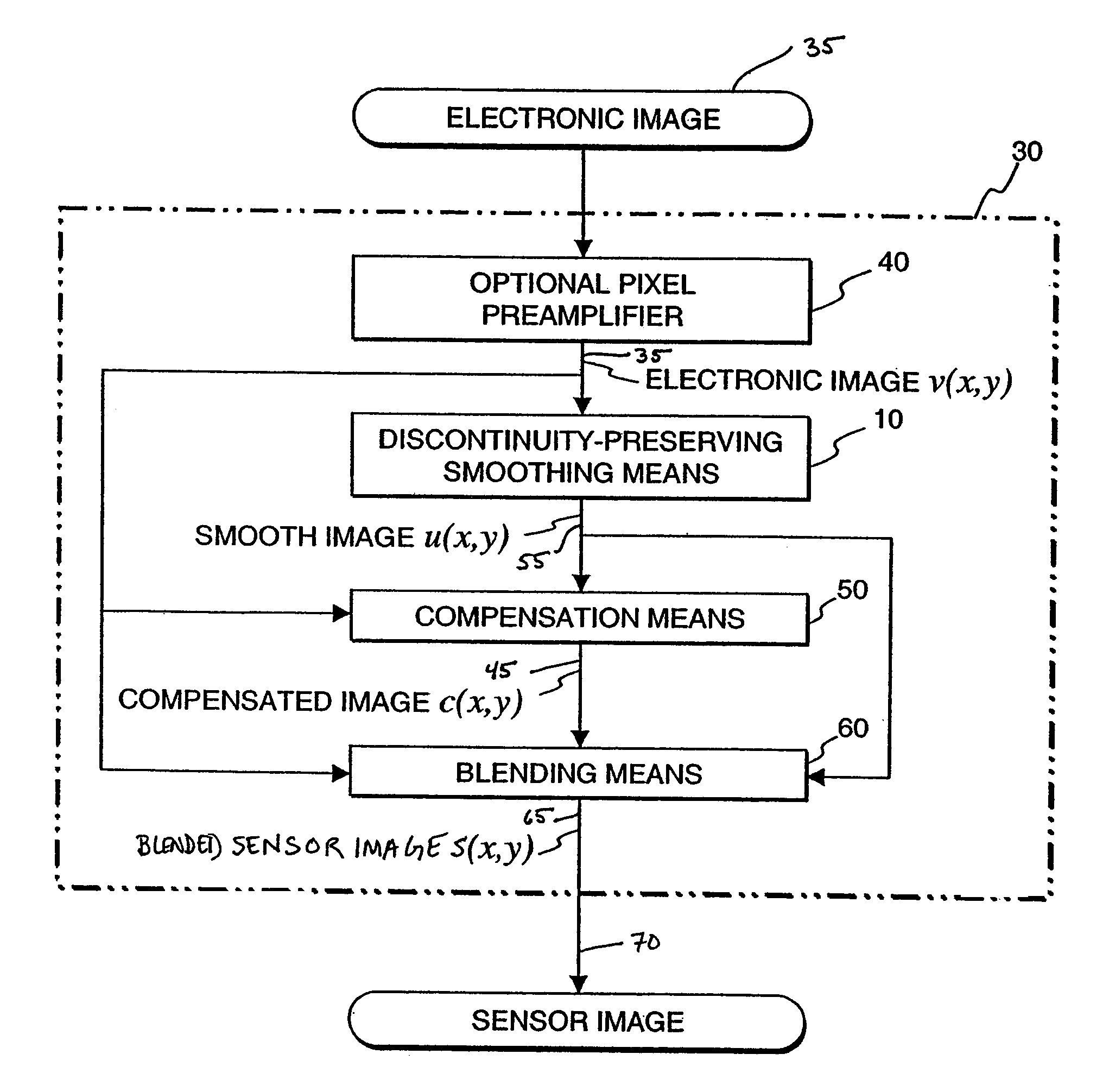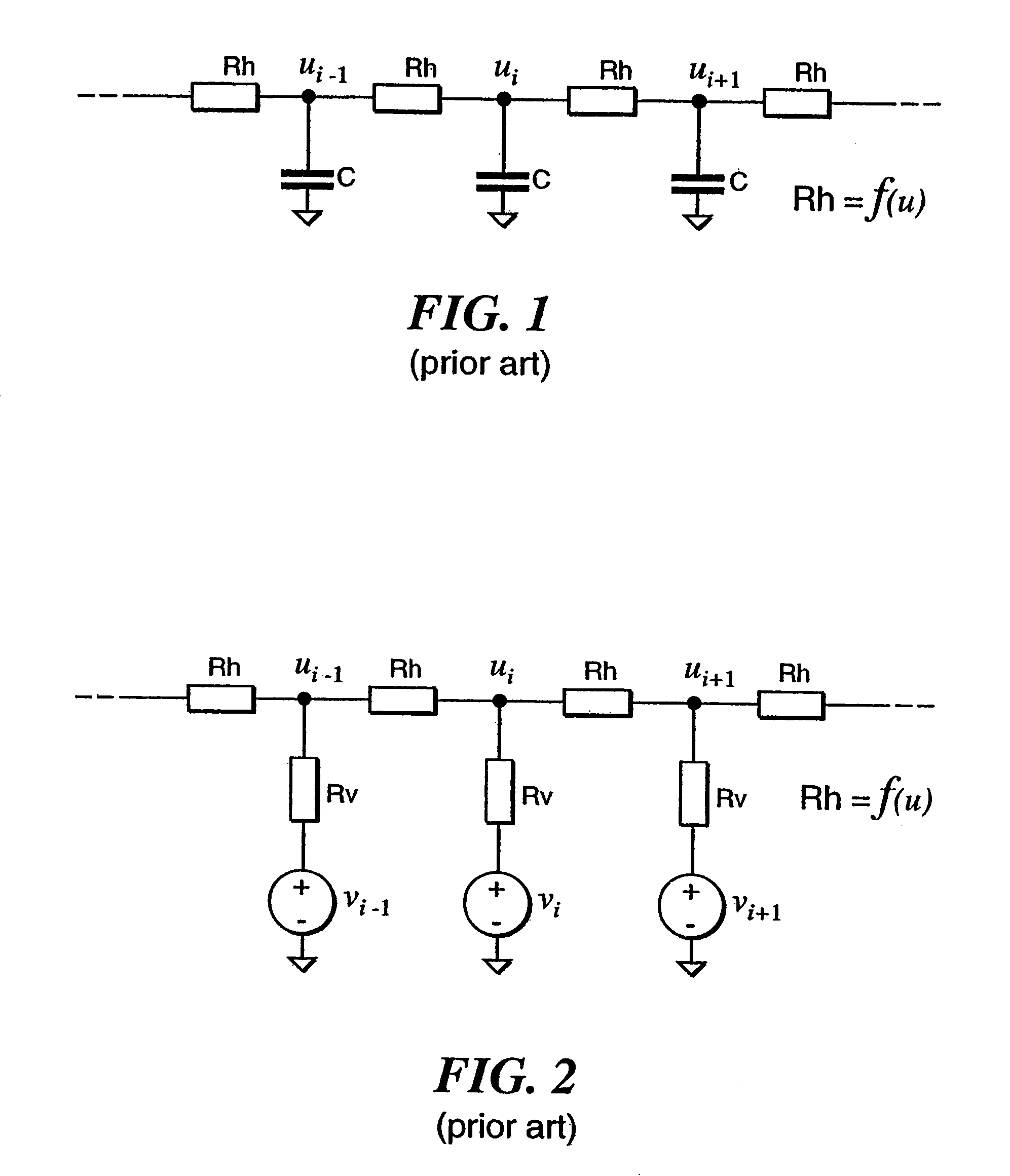Method for improving digital images and an image sensor for sensing the same
a digital image and image sensor technology, applied in image enhancement, color signal processing circuits, instruments, etc., can solve the problems of signal saturation and clipping in the sensed image, the dynamic range of natural optical images can easily exceed the available dynamic range of imaging devices, and the inability to easily sense such a high dynamic range signal. achieve the effect of preventing smoothing across sharp discontinuities
- Summary
- Abstract
- Description
- Claims
- Application Information
AI Technical Summary
Benefits of technology
Problems solved by technology
Method used
Image
Examples
Embodiment Construction
[0056]The present invention pertains to an apparatus and method for improving signal quality. The invention preserves discontinuity while reducing noise, image variations particularly those variations caused by illumination conditions, exposure compensation, and dynamic range compression.
[0057]Referring to the drawings in greater detail wherein like reference numerals refer to similar or identical parts throughout various views, several preferred embodiments of the present invention and methods of practicing the present invention will be considered.
[0058]FIG. 3 shows a schematic representation of one embodiment of the present invention. It employs an image sensor 70 that detects and processes optical image impinging on its sensitive surface according to the present invention. The optical or acoustic images are detected by a detector array 80, which converts the image into an electronic image. The electronic image is sent from the detector array 80 to a signal-processing system 30 fo...
PUM
 Login to View More
Login to View More Abstract
Description
Claims
Application Information
 Login to View More
Login to View More - R&D
- Intellectual Property
- Life Sciences
- Materials
- Tech Scout
- Unparalleled Data Quality
- Higher Quality Content
- 60% Fewer Hallucinations
Browse by: Latest US Patents, China's latest patents, Technical Efficacy Thesaurus, Application Domain, Technology Topic, Popular Technical Reports.
© 2025 PatSnap. All rights reserved.Legal|Privacy policy|Modern Slavery Act Transparency Statement|Sitemap|About US| Contact US: help@patsnap.com



